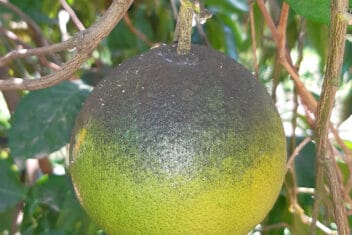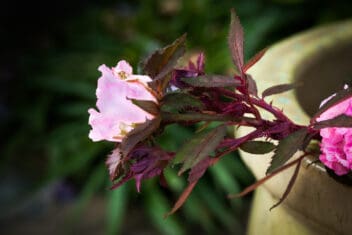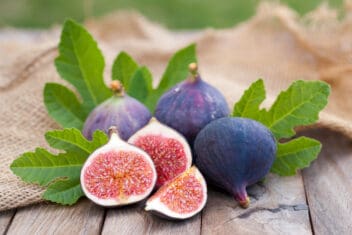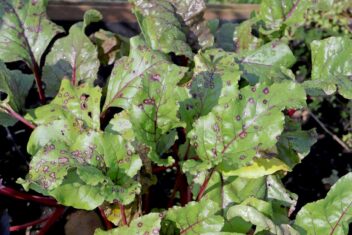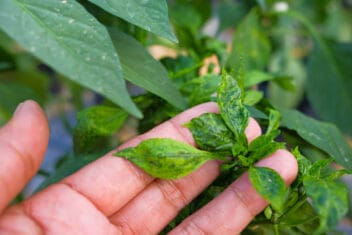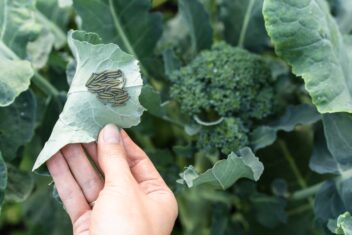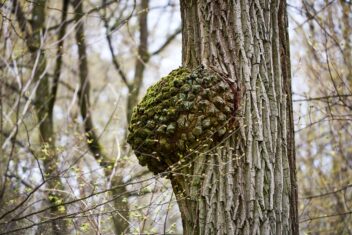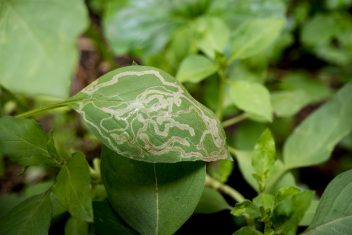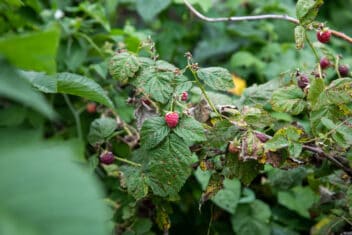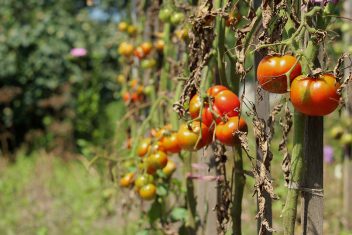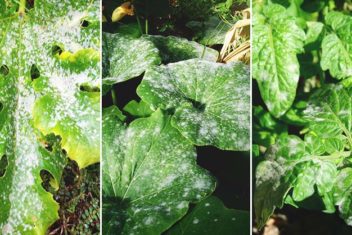Radishes are a gardening favorite for good reason. Who doesn’t love the fact that they’re so easy to grow and provide a quick and delicious crop? But while they’re generally problem-free, it’s not unheard of for pests and diseases to trouble your radishes.
Sometimes radish problems can be no biggie, resulting in nothing more than a little cosmetic damage. Other times, it can completely destroy all of your plants.
While insect and herbivore radish pests are annoying, radish diseases can be downright devastating. These are some of the most common radish diseases you’ll encounter:
1. Damping-Off Disease

Of the radish diseases on this list, this one can be one of the first you’ll encounter. That’s because it attacks young seedlings.
Damping off can be caused by a number of soil-borne fungal pathogens. These are: Pythium spp., Rhizoctonia solani, Aphanomyces cochlioides, and Phoma betae.
Essentially, what happens is that the fungus destroys the stems’ cell walls, so they can’t draw nutrients up into the upper plant. When infected, the stems wither, and the aerial parts fall over and die.
You can avoid damping-off disease by waiting until after your area’s last frost date to plant seeds. Damping-off disease usually happens when the soil is overly damp and cold. You may avoid it if you wait until it’s warm and drier.
Additionally, you can pour a garlic drench into the soil as an anti-fungal measure. Do this a week or two before you plant anything, as it’ll give the garlic water a chance to disperse. We talk more about using a garlic soil drench to control disease in our guide.
2. Powdery Mildew

Powdery mildew thrives in periods of hot, damp weather. The mildew flourishes and turns leaves and stems into unusable sludge. Furthermore, the spores can stay in the soil for years, harming subsequent crops.
In other words, it’s bad news when it comes to radish diseases. Plus, it’s extraordinarily common! What a jerk.
Check your plants for mildew daily, and be sure to snip off and burn any that exhibit signs of illness. Try only to water your garden at soil level, and let the area dry out a bit in between waterings.
If the mildew spreads too much, you’ll have to dig up and burn everything in there. Then treat the area with a fungicide, and don’t plant the same type of crop there for at least two years.
To learn all about this common problem and other ways to handle it, visit our guide.
3. Downy Mildew

Downy mildew is a common disease that impacts many species, including brassicas like radishes and cucurbits like melons.
Since this mildew lingers on the soil’s surface, you can avoid the spread by allowing the sun to kill it off. Till your garden and let the spring or summer heat kill of the spores before planting anything in that area. Keep the soil’s surface clear of fallen leaves and dead plant matter, and thin out dense foliage to allow for better airflow.
4. Fusarium Wilt
Fusarium oxysporum f. conglutinans and f. raphani is a fungal pathogen thrives in hot, moist soil, and will cause your plants to fall over and die. There’s no cure or treatment for it, so your best bet is prevention.
Improve the soil’s quality by ensuring proper drainage and good health. If you see any fusarium wilt signs in your plants, such as yellowing or browning leaves and drooping branches, tear up that plant and burn it.
Sterilize all your garden tools between use, and don’t overwater the soil. If you discover that you are, in fact, dealing with this kind of wilt, don’t plant the same crop in that area again for at least ten years.
Instead, dig down about one foot, remove the soil, and either sterilize it with boiling water and sunlight or dispose of it safely.
This disease infects a lot of veggie species. Learn more in our guide.
5. Rust

Rust is a fungus (Albugo candida) that thrives in warm, damp conditions, and loves to lurk in and around soil detritus. It doesn’t look like some of the other rusts out there with dark orange spores. It causes white, raised spores, which is why it’s often called white rust.
You can avoid it by clearing all dead leaves and fallen plant matter from the soil’s surface and only watering at the soil level. Don’t water your garden during overly humid periods, and destroy any plants that exhibit early rust symptoms.
If this disease attacks, treat your plants with copper fungicide. Copper fungicide is a smart thing to have around for treating several radish diseases.
6. Scab
Unlike some of the fungal radish pests on this list, scab is a bacterial infection that doesn’t kill the plant: it merely makes the roots really ugly. This may not matter to you if you’re simply growing radishes to eat, but if you’re planning to sell any of them, they’ll be too unsightly to be marketable.
The best way to deal with scab is to avoid it with regular crop rotation. In fact, planting legumes such as soybeans in an area that had been affected with root scab has been shown to reduce the pathogen’s strength!
7. Black Rot

This is a bacterial disease (Xanthomonas campestris pv. campestris) that feeds almost exclusively on members of the Brassicaceae family. That includes cabbage, kale, broccoli, mustard, and of course, radishes.
The disease manifests first as yellow, V-shaped lesions, which quickly turn brown and start to ooze a sticky, brown-black substance.
Much like other fungal or bacterial radish pests, there’s no cure for black rot. You can try to prevent it by not overcrowding your plants, especially if you live in a hot, humid climate.
Additionally, pull up and burn any plants that show early warning signs. If black rot does decimate your crop, sterilize the soil after you’ve torn everything up, and don’t plant brassicas there again for several years.
8. Clubroot

Clubroot (Plasmodiophora brassicae) can affect any brassica you try to cultivate, but it’s particularly drawn to radishes, kohlrabi, and turnips. It causes the roots to turn gnarled and lumpy, prevents them from shifting nutrients to aerial parts, and turns leaves yellow.
You can avoid clubroot by raising the soil’s pH level if it’s too low. Clubroot thrives in acidic soil, so making it a bit more alkaline will often keep it in check. Try to raise your soil above 7.2. A lime-based compound is usually the best route for raising soil pH.
If you’re not sure what kind of product to use, something like this Organic Dolomite Lime by CZ Organics works great.
Additionally, try to find cultivars that are resistant to radish diseases like clubroot, as this may also help to keep your sanity in healthy working order.
The Department of Plant Pathology at the Ohio Agricultural Research and Development Center identified ‘Ookura,’ ‘Ronde Witte,’ ‘Round Scarlet Giant,’ ‘Saxerre,’ ‘Radar,’ and ‘Robino’ as being reliably resistant to clubroot.
9. Black Root

Black root is different than black rot. This fungal pathogen, Aphanomyces raphani, impacts all cruciferous plants. It has been such a damaging and widespread disease in some areas that commercial growers have had to pull their plants and plow their fields to grow something else.
This disease causes brown or black discoloration at cracks and on the inside of the roots. The impacted area will stop growing, so you’ll see sunken spots or even girdling of the entire root.
‘White Icicle’ is particularly susceptible, and all white radishes tend to be more prone to this problem than other types. ‘White Spike,’ ‘Red Prince,’ ‘Fuego,’ and Belle Glade’ are all resistant.
Rotate crops so that you only have a plant in one place every four years. Crop rotation is a great way to avoid most radish diseases.

